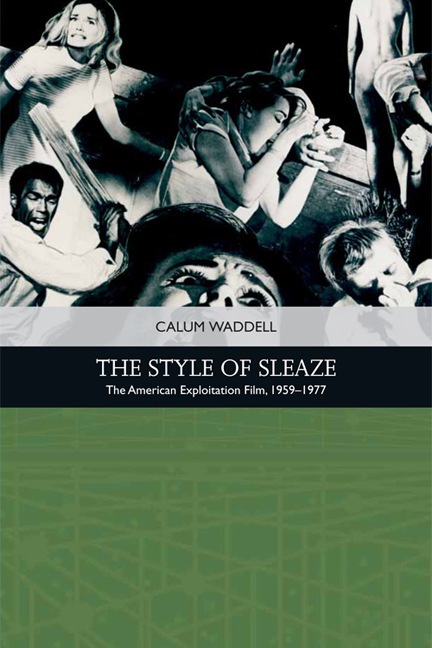Book contents
- Frontmatter
- Contents
- List of Figures
- Acknowledgements
- Introduction
- 1 Not Quite Hollywood
- 2 Emerging from Another Era – Narrative and Style in Modern Exploitation Cinema
- 3 Can We Call It Sexploitation?
- 4 Sex Morality Plays: Character in Adult Cinema
- 5 The Body is Everything: Sexploitation Spectacle
- 6 Exploitation-Horror Cinema
- 7 Cannibalising Tradition: Romero’s Zombies and a Blood Feast
- 8 Slash and Burn: The Exploitation-Horror Film in Transition
- 9 Blaxploitation Cinema: Race and Rebellion
- 10 Sex, Violence and Urban Escape: Blaxploitation Tropes and Tales
- 11 The Blaxploitation Female
- 12 Exploitation as a Movement
- Select Bibliography
- Index
1 - Not Quite Hollywood
Published online by Cambridge University Press: 11 November 2020
- Frontmatter
- Contents
- List of Figures
- Acknowledgements
- Introduction
- 1 Not Quite Hollywood
- 2 Emerging from Another Era – Narrative and Style in Modern Exploitation Cinema
- 3 Can We Call It Sexploitation?
- 4 Sex Morality Plays: Character in Adult Cinema
- 5 The Body is Everything: Sexploitation Spectacle
- 6 Exploitation-Horror Cinema
- 7 Cannibalising Tradition: Romero’s Zombies and a Blood Feast
- 8 Slash and Burn: The Exploitation-Horror Film in Transition
- 9 Blaxploitation Cinema: Race and Rebellion
- 10 Sex, Violence and Urban Escape: Blaxploitation Tropes and Tales
- 11 The Blaxploitation Female
- 12 Exploitation as a Movement
- Select Bibliography
- Index
Summary
Exploitation films are not and never were Hollywood movies. The term ‘Hollywood’ may relate to a geographic area but its usage in the popular lexicon frequently pertains to the film industry that enshrines its economic and cultural values. As such, I use Hollywood in this book less as an umbrella term and more as a metonymic one: as a reference to the more conventional style of filmmaking – most famously distinguished and discussed by Bordwell, Staiger and Thompson.2 Labelled ‘an excessively obvious cinema’ by the authors, due to a ‘conservatism of style’ – that is, an orderly beginning, middle and end as well as the narrative use of repeated plot points – I want to further distinguish the exploitation film by, foremost, indicating its more visceral approach. For instance, take a famous film such as Last Tango in Paris, which was distributed by a major Hollywood studio and features an A-list American actor (Marlon Brando) but was made and produced in France by an Italian director (Bernardo Bertolucci). Stylistically, Last Tango in Paris warrants more comparison to what this book deems to be a ‘Hollywood’ film than an exploitation film because it conceals the sex acts that are nevertheless integral to its plot and story. In an exploitation film of the same era, both the nudity and the sex would be unhidden. While Schaefer also indicates the differences between the classical exploitation film and Hollywood cinema, the separation of studio filmmaking and independent filmmaking is a facet that continues to confuse academic discourse on exploitation films. For instance, in his essay ‘Blaxploitation and the Misrepresentation of Liberation’, Robinson, for instance, fails to distinguish between the studio-produced Shaft (Gordon Parks, 1971) and the non-studio (exploitation) film Coffy (Jack Hill, 1973). He sees both films as belonging to a wider spectrum of black exploitation cinema. Yet the two are very different: Shaft begins with its hero walking down New York's 42nd Street to the famous Isaac Hayes’ soul number on the soundtrack, establishing his ‘coolness’ and masculinity. Coffy, on the other hand, opens with an African-American femme fatale blowing apart a drug dealer's head with a shotgun blast to the face. As the gruesome spectacle unfolds we are neither here nor there as to whether she is someone to be cheered or feared – and this moral ambiguity continues throughout the film.
- Type
- Chapter
- Information
- The Style of SleazeThe American Exploitation Film, 1959–</I>1977, pp. 12 - 31Publisher: Edinburgh University PressPrint publication year: 2018



